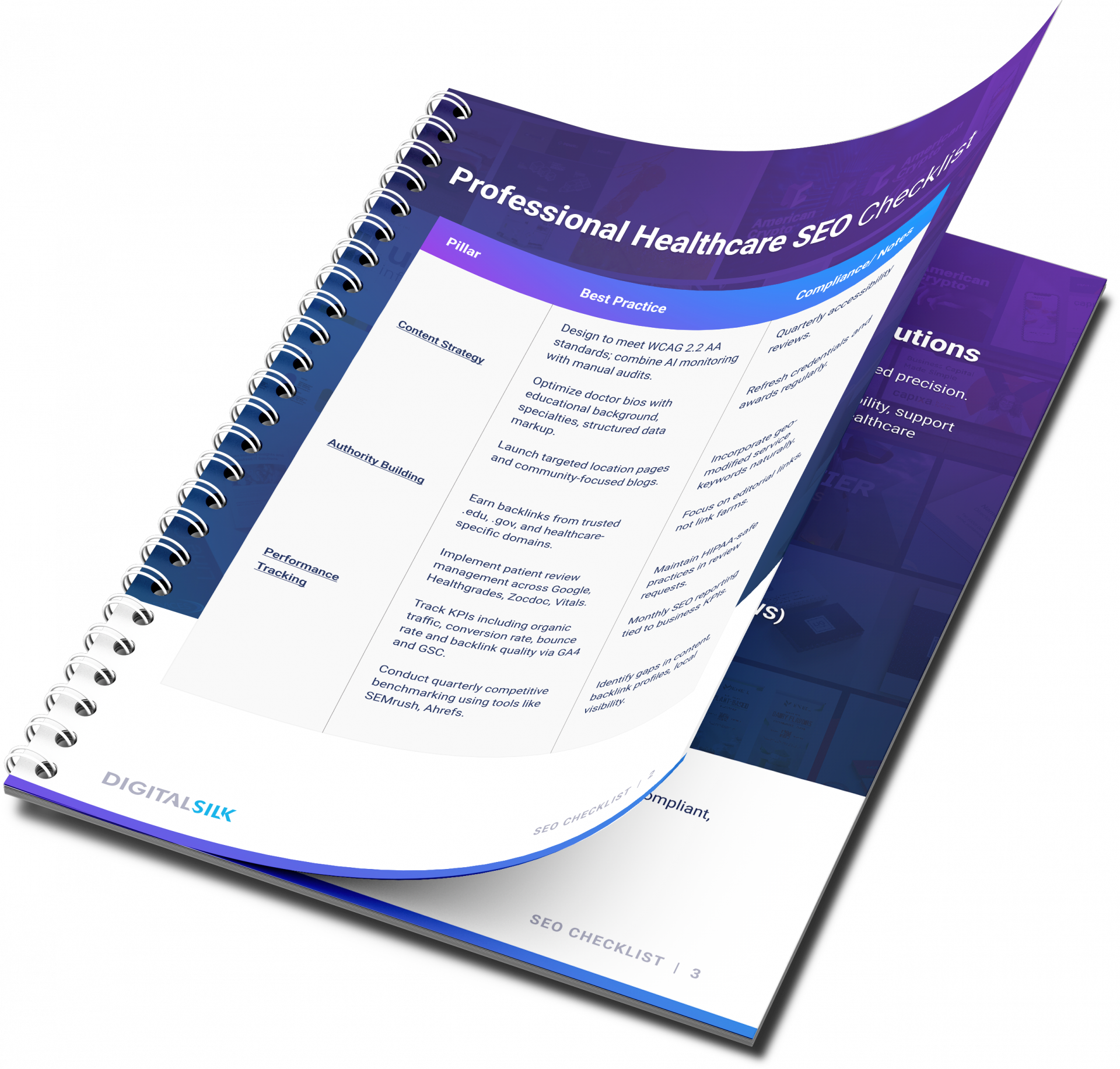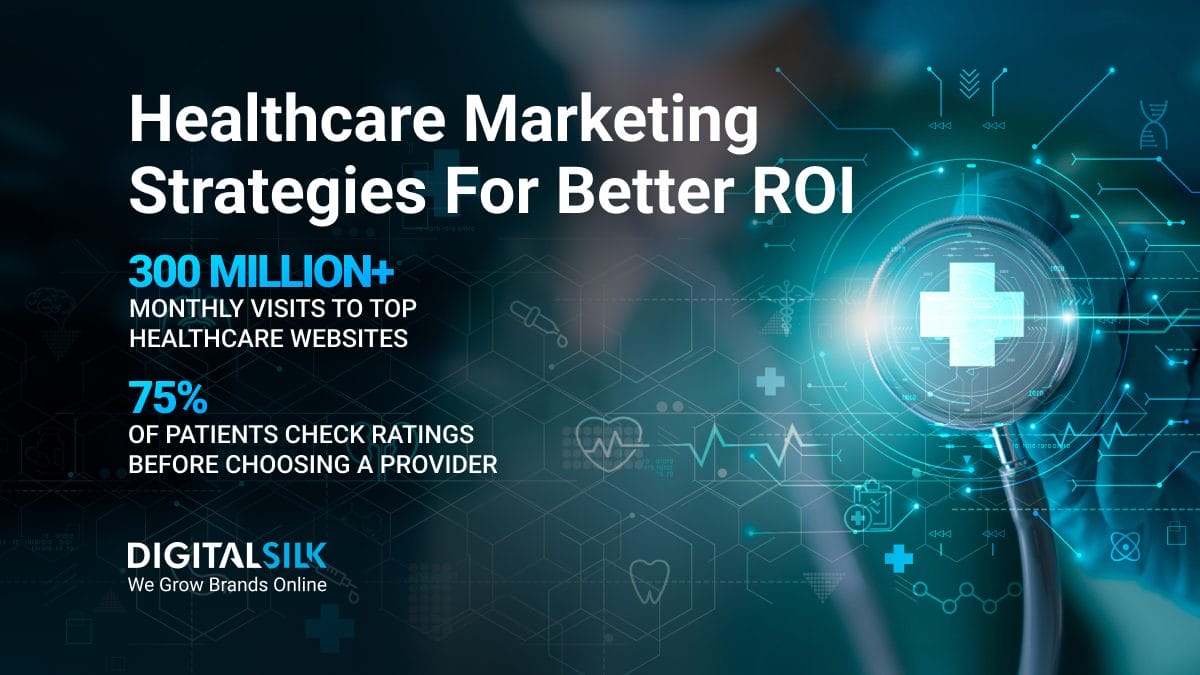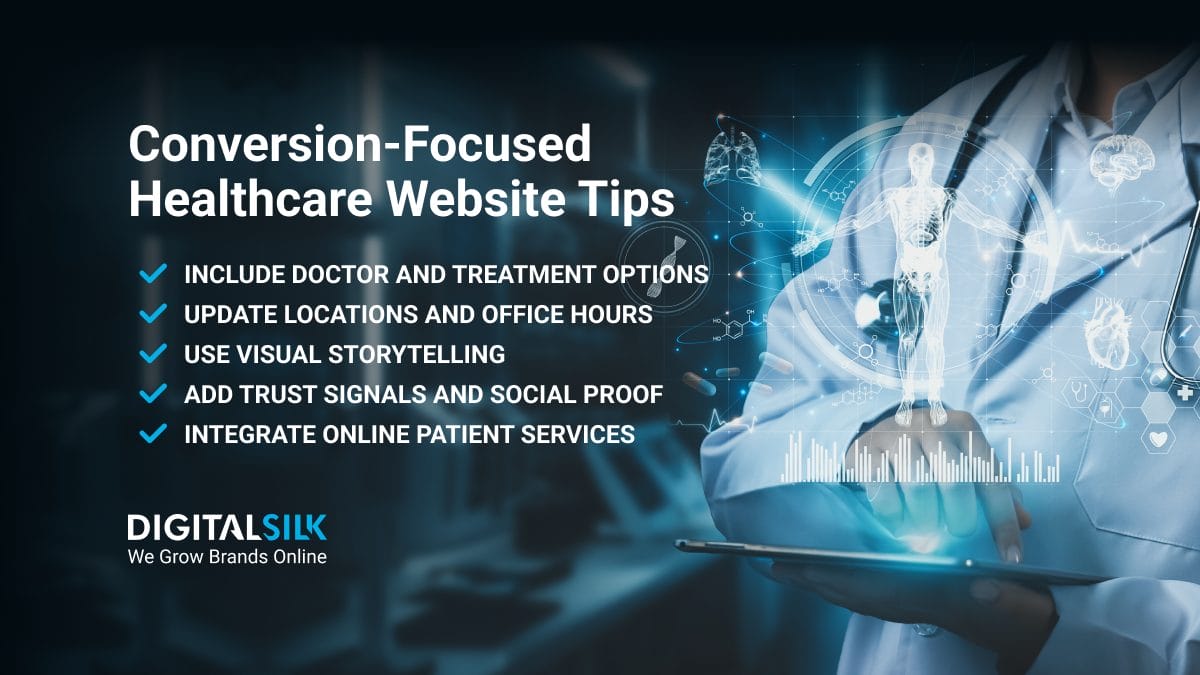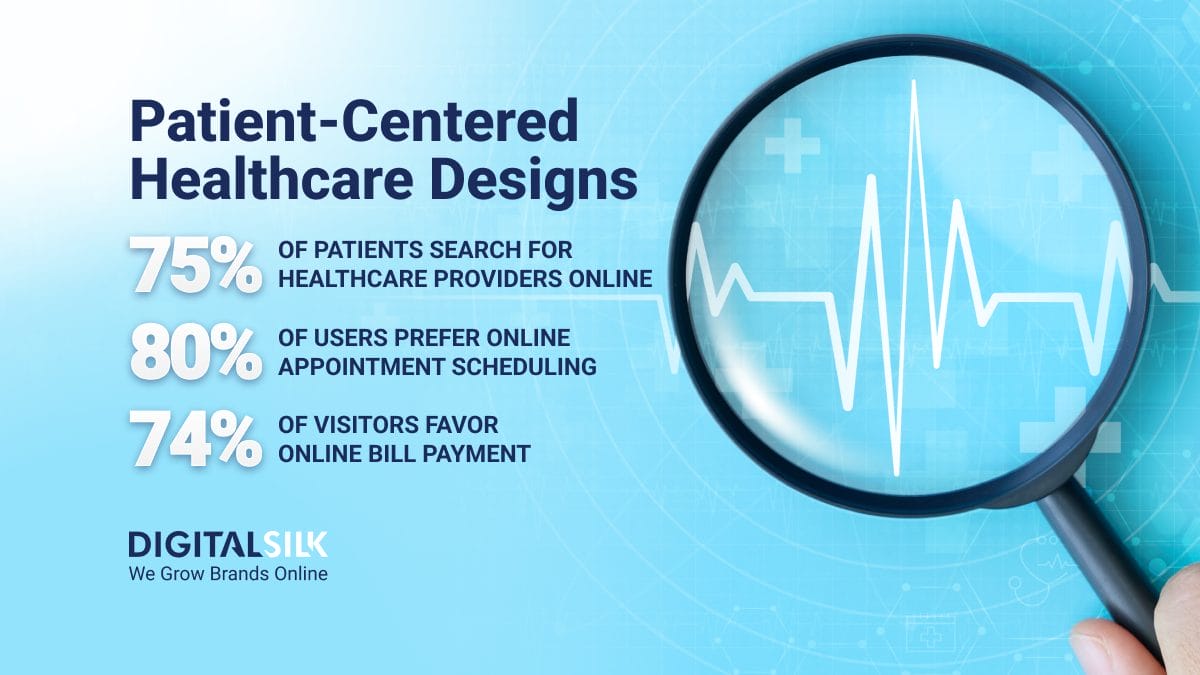Best SEO Practices For Hospitals: Key Highlights
-
Content builds authority: Patient-focused, E-E-A-T-aligned content improves rankings and boosts practice credibility.
-
Compliance powers performance: HIPAA, accessibility and page speed directly impact visibility, trust and lead quality.
-
Local optimization wins patients: Google profiles, NAP consistency and localized pages drive high-converting traffic.
Did you know that 67% of consumers start with a general internet search when looking for healthcare services?
Healthcare SEO carries significant weight beyond typical marketing efforts, as Google’s “Your Money or Your Life” (YMYL) guidelines hold medical content to the strictest possible standards, flagging any hint of health misinformation.
In this post, you’ll find a HIPAA-compliant, enterprise-ready playbook with the best SEO practices for hospitals and medical clinics that improve rankings, build trust and help you connect with high-intent patients seeking specialized care.
Step 1. Implement Local SEO For Patient Acquisition
Local search visibility directly drives patient acquisition for healthcare organizations.
With over 46% of Google searches having local intent, you can drive high-intent and conversion-focused traffic through strategic local SEO.
1. Optimize Google Business Profile Listings
Your Google Business Profile (GBP) often serves as a patient’s first impression of your clinic — and a critical driver of online visibility.
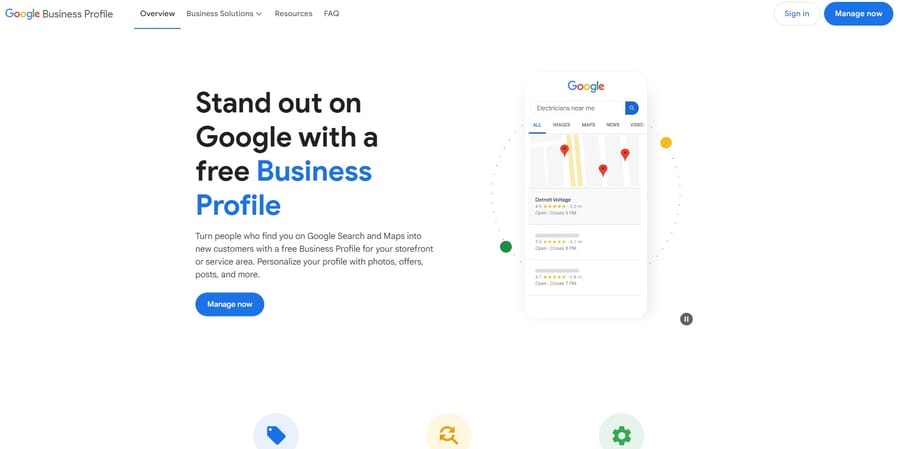
Patients are 2.7 times more likely to view your institution as credible and reputable if you maintain a complete, professional GBP.
Optimizing your profile directly impacts your ability to rank in Google’s Local 3-Pack — the top three business listings displayed in local search results.
You can maximize your GBP effectiveness by:
- Completing all sections: Fully completed profiles receive significantly more visibility than incomplete or unclaimed listings.
- Adding quality media: Professional photos of your facility and staff help build trust and credibility.
- Showcasing services: Clearly list all specialties, treatments and key offerings.
- Enabling appointment booking: Add scheduling links to reduce friction and convert more patients.
- Posting regular updates: Highlight news, facility improvements and seasonal services to stay relevant.
For multi-location hospital systems, use GBP’s bulk-location manager and provider-level sub-profiles to secure every “near-me” micro-market.
Clinics with optimized, accurate GBP profiles consistently outperform competitors in search rankings and patient engagement.
2. Use Local Keywords For Hospital SEO
With 21% of U.S. consumers conducting online searches for local businesses daily — and 32% searching multiple times a week — hospitals and clinics that invest in local SEO are better positioned to capture patient demand at the exact moment of intent.
Since 53.3% of all website traffic comes from organic search, targeted local visibility becomes a key driver of inbound growth.
Effective local SEO starts with combining condition + specialty + micro-location.
Instead of broad phrases like “orthopedic surgeon,” focus on targeted search terms such as “ACL surgeon in [city]” or “knee replacement specialist near [neighborhood].”
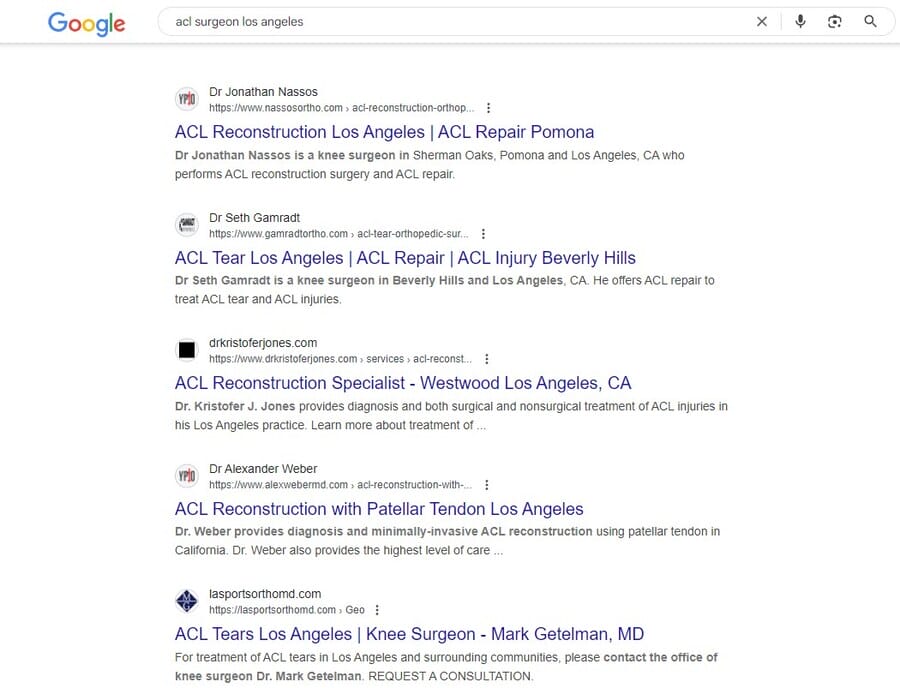
To strengthen local search performance:
- Use the ZIP-code data from your patient Electronic Health Record (EHR) records to focus on suburbs with higher-value procedures
- Include neighborhoods, landmarks and specific areas within your service region
- Optimize for “doctor in [city name]” and similar location-based variations
- Create separate location pages for each facility in your healthcare system
- Incorporate these terms naturally in page titles, headers and content
- Claim and correct listings across Healthgrades, Vitals, Zocdoc and listing aggregators, such as WebMD, Yelp and Google Business Profile
Search terms vary significantly between communities, so conduct keyword research specifically for your local target audience.
While competitive analysis provides valuable insights, prioritize terms that reflect how your community actually searches for healthcare services.
Remember that quality always outweighs keyword density — keyword stuffing damages search rankings and diminishes content value.
Follow these tips to naturally integrate relevant terminology in your messaging:
- Place important terms in titles, headings and early paragraphs
- Maintain natural language patterns — avoid awkward phrasing
- Use synonyms and related terms for semantic relevance
3. Prioritize NAP Consistency Across Medical Directories
Accurate Name, Address, and Phone number (NAP) information is not just a technical requirement — it directly impacts patient trust, referral patterns and local search performance.
In fact, 80% of consumers lose trust in a business if they encounter incorrect or inconsistent contact details online — an especially costly mistake for healthcare providers where trust is paramount.
For healthcare providers, NAP consistency:
- Drives local SEO rankings: Google cross-references your listings across platforms; even minor discrepancies can weaken your authority and hurt your position in critical search features like the Local 3-Pack.
- Protects patient access and loyalty: Incorrect information can cause appointment no-shows, patient dissatisfaction and loss of repeat business.
- Secures referral networks: Physicians and insurance partners often validate provider information online; inaccurate listings can disrupt professional referrals and reduce case volumes.
- Builds a resilient brand reputation: Consistency across all digital touchpoints signals operational excellence and improves brand preference in competitive healthcare markets.
- Strengthens authority through local citations: Accurate citations on healthcare-specific platforms like Healthgrades, Vitals, Zocdoc and WebMD, as well as general directories like Yelp and Bing Places, act as digital validation points that improve search engine trust and local rankings.
Standardize your NAP information beginning with your website and Google Business Profile, then expand systematically to trusted healthcare and general directories.
A disciplined approach to both NAP consistency and citation management directly supports stronger online visibility, patient acquisition and long-term growth.
Step 2. Optimize Site Structure & Technical SEO
Technical optimization creates the foundation for effective healthcare SEO.
Unlike standard websites, hospital and clinic sites must balance search visibility with strict security and compliance requirements to protect sensitive patient data.
1. Use Technical SEO Strategies
A well-structured medical website helps search engines discover, crawl and index your content efficiently — but in healthcare, technical SEO must also meet strict compliance and usability standards.
This technical foundation makes it easier for both search engines and patients to navigate your site.
Key components of technical SEO for healthcare providers include:
- Site architecture: Build a logical hierarchy with services, specialties and locations clearly organized.
- XML sitemaps: Give search engines a clear roadmap of your site’s most important pages.
- Clean URL structure: Create descriptive URLs that include relevant keywords.
- Schema markup: Add healthcare-specific structured data to enhance how search results display your practice information.
- Proper header tags: Use headings (H1, H2, H3) to establish visual hierarchy and readability while helping search engines understand your content’s organization.
- Strategic internal linking: Link to related healthcare services or specialties to help search engines discover new content while guiding patients toward relevant information about their conditions or treatment options.
But for hospitals and clinics, technical SEO doesn’t stop at optimization — it must be HIPAA and accessibility-compliant:
- Page speed: Ensure Largest Contentful Paint (LCP) is under 2.5 seconds on mobile. Use server-side rendering and a global image CDN to improve performance. More on this below.
- Security: Deploy end-to-end TLS 1.3 encryption and a Web Application Firewall (WAF). Conduct annual HIPAA risk assessments to maintain data protection.
- Data privacy: Implement a Consent Management Platform that supports state-specific opt-outs (e.g., CCPA, CPA) and pass consent strings server-side through Google Tag Manager.
- Accessibility: Design to meet WCAG 2.2 AA standards. Use a combination of AI-driven accessibility monitoring and manual audits to ensure usability for all visitors. We’ll talk more about this below.
- Mobile UX: Structure menus so that key actions — call, book, pay — are always within two taps.
Finally, run regular audits to fix crawl errors, broken links, and duplicate content issues that can hurt your site’s performance.
A compliance-first technical foundation ensures your site is not only search-friendly, but secure, accessible and legally sound.
| Category | Best Practice | Implementation Tip |
| Page Speed | Keep LCP under 2.5s on mobile | Use server-side rendering and image CDNs |
| Security | Use TLS 1.3 encryption and WAF | Run annual HIPAA risk assessments |
| Data Privacy | Support opt-outs via CMP and pass consent via GTM | Use state-compliant consent platforms |
| Accessibility | Meet WCAG 2.2 AA with AI and manual audits | Combine automated checks with expert reviews |
| Mobile UX | Keep key actions within 2 taps | Simplify menus and CTAs for touch devices |
| Site Integrity | Fix crawl errors, broken links and duplicates | Audit regularly for technical SEO issues |
2. Improve Hospital Website Speed And Performance
Website speed is one of the top 20 Google ranking factors.
Patients searching for healthcare information typically need fast results — especially in urgent situations.
You can enhance your medical website’s loading speed by:
- Optimize images: Compress and resize images using dedicated compression tools
- Minimize HTTP requests: Reduce unnecessary elements that require additional server requests
- Enable browser caching: Store static files in users’ browsers for faster subsequent visits
- Implement lazy loading: Delay loading for below-the-fold images until users scroll down
- Use cross-device responsiveness: With 64.04% of web traffic coming from mobile devices, you should implement responsive layouts that adjust to all screen sizes.
3. Use Voice Optimization & Accessibility
As healthcare consumers increasingly rely on mobile and voice search, clinics and hospitals must adapt their SEO strategies to match how patients find services today.
Since 20% of searches in the Google app are made through voice, this strategy reshapes the way users phrase queries to get immediate and accurate results.
To optimize for voice search and accessibility:
- Integrate natural, conversational keywords: Add long-tail phrases and question-based queries (e.g., “best pediatrician near me” or “how to schedule a cardiology appointment”) into service pages, FAQs and blog content.
- Implement structured data markup: Use FAQ schema, local business schema and medical organization schema to help search engines quickly extract and display your information in voice responses.
- Simplify website navigation: Create clear, logical menu structures and minimize clicks needed to reach critical information like services, contact details and appointment booking.
- Ensure ADA compliance: Add alt text to all images, use descriptive link text, maintain strong color contrast and structure headings properly to make your website fully navigable by screen readers.
Updating your SEO strategy for voice and accessibility ensures your practice remains easy to find and easy to engage with, no matter how patients search.
Step 3. Build Authority With Backlinks And Online Reviews
Building online authority requires more than a well-designed website.
With healthcare marketing budgets dropping from 9.1% to 7.7% of total revenue in 2024, reallocating resources to earn quality backlinks and generate patient reviews offers a cost-effective way to drive organic traffic and strengthen search rankings.
1. Backlink Strategies For Healthcare Providers
Backlinks serve as digital votes of confidence for your healthcare website.
Google views these links as endorsements — whenever reputable websites link to your hospital or clinic, it signals credibility and trustworthiness to search engines.
For medical organizations, quality always trumps quantity.
Rather than pursuing numerous low-value links, focus on acquiring authoritative backlinks from these healthcare-specific sources:
- Medical associations and institutions: Links from established organizations like the American Medical Association (AMA), the National Institute of Health (NIH) and medical universities substantially enhance your expertise and authority signals.
- Healthcare directories: Submissions to reputable medical directories improve both search rankings and patient discovery.
- Local healthcare partnerships: Collaborations with local health organizations generate valuable backlinks through shared content and event promotions. Earning .edu and .gov links is highly beneficial for hospitals and healthcare organizations.
- Guest blogging: Publishing informative articles on authoritative healthcare platforms establishes your providers as credible information sources while earning quality backlinks.
2. Encouraging And Managing Patient Reviews
Patient reviews perform double duty — they influence patient decisions and directly affect your search visibility.
With 45% of users trusting reviews from other patients and 48% relying on word-of-mouth recommendations, a strong review profile doesn’t just build reputation — it signals relevance and authority to search engines, boosting your local SEO rankings.
To effectively gather more patient reviews:
- Ask directly: Train staff to request feedback, especially after positive interactions. Auto-embed 5-star snippets on location pages (HIPAA-safe).
- Follow up after visits: Send post-appointment texts or emails with direct review links.
- Simplify the process: Make reviewing easy by providing clear instructions and links to review sites.
- Use multiple touchpoints: Place review request prompts on your website, social media, and in-office signage.
The patient-provider relationship fundamentally depends on trust.
Through transparency and active engagement with reviews, you establish credibility that extends beyond individual interactions.
Step 4. Create High-Quality, Patient-Centric Content
Publishing clear, patient-focused content remains one of the most effective SEO tips for healthcare providers looking to improve search rankings and patient trust.
By answering real patient questions with accurate, accessible information, you can position your clinic as a thought leader in your niche while driving steady, qualified traffic.
1. Develop A Healthcare Content Strategy
The best SEO strategies for hospitals are built on data-driven, research-backed and keyword-optimized content marketing strategies.
In fact, 74% of healthcare marketers in the U.S. use blogs to engage their audiences, highlighting the ongoing value of informative, targeted content.
Building a successful content strategy starts with creating detailed patient personas based on demographics, including:
- Specific health concerns
- Patient search intent
- Preferred content formats
- Browsing behavior
Your strategy should align with E-E-A-T guidelines (Experience, Expertise, Authoritativeness and Trustworthiness) — Google’s framework for evaluating the quality of content, particularly for health-related websites.
For hospitals implementing the best SEO practices for healthcare clinics, each E-E-A-T component plays a distinct role:
- Experience: Real-world clinical experience with treatments or conditions discussed
- Expertise: Professional medical knowledge demonstrated throughout content
- Authoritativeness: Recognition as a credible source within the healthcare community
- Trustworthiness: Clear evidence of accuracy and patient safety priorities
| E-E-A-T Element | Execution |
| Experience | Real clinician by-lines, brief intro video filmed in-clinic |
| Expertise | Peer-reviewed citations with PubMed IDs |
| Authoritativeness | “As featured in” logo bar: Becker’s, JAMA, Medscape |
| Trist | Visible last-review data, HONcode badge, clear disclaimers |
2. Use Patient Questions To Guide Content Creation
Answering real patient questions strengthens both your SEO performance and your position as a trusted healthcare resource.
With 75% of people in the U.S. turning to the Internet first when searching for health information, creating content that addresses their specific concerns is key to capturing early patient interest and driving qualified traffic.
You can find relevant patient questions through several methods:
- Keyword research tools to analyze search data
- Medical forums and Q&A sections
- “People Also Ask” features on Google
- Direct surveys of your patient base
- Comments on health blogs and videos
Integrating patient-centered topics into your SEO strategy not only improves online visibility but also builds credibility, strengthens provider-patient relationships and supports long-term loyalty.
3. Build Trust With Optimized Doctor Bios And Credentials
Doctor bios are not just a patient resource — they are a strategic SEO asset that can drive qualified traffic and improve rankings for provider-specific searches.
Comprehensive, keyword-optimized physician profiles help search engines index your pages, so it’s easier for patients to find and trust your practice.
An effective SEO-driven doctor bio should include:
- Educational background and board certifications
- Years of clinical experience and specializations
- Professional affiliations and achievements
- Care philosophy and approach to patient relationships
You should use structured data markups to enhance visibility in search results and update bios regularly reflect new qualifications, awards or practice changes.
Well-optimized doctor profiles not only help capture patient intent searches but also support the broader authority and ranking strength of the hospital or clinic website.
Step 5. Track, Analyze And Improve SEO Performance
Tracking key metrics forms the foundation of successful healthcare SEO strategies.
Without proper measurement, even the best SEO advice for medical clinics is a shot in the dark, missing opportunities to refine digital efforts and improve patient acquisition.
1. Using Google Analytics And Search Console For SEO Tracking
To make informed decisions about your healthcare website’s SEO strategy, you need more than surface-level traffic reports — you need clear visibility into patient behavior and search performance.
Google Analytics 4 (GA4) and Google Search Console work together to provide this view, helping you measure both how patients find your site and what they do once they arrive.
GA4 tracks user interactions across devices, offering a more accurate picture of the patient journey from initial search to appointment request.
When connected to Google Search Console, you can see exactly which search queries are driving traffic, identify gaps in content performance and address technical issues that might be limiting your visibility.
For hospitals and clinics looking to build sustainable growth through SEO, these insights are key to refining content strategies, optimizing conversion rates and maintaining a competitive advantage in local search.
2. Key SEO Metrics For Hospitals And Clinics
Tracking the right SEO metrics helps hospitals and clinics connect digital performance directly to patient acquisition, operational efficiency and revenue growth.
Surface-level numbers are not enough — leadership teams need to understand how each key performance indicator (KPI) ties to broader business outcomes:
| SEO Metric | Why It Matters | Strategic Insight |
| Organic Traffic | Patient interest via unpaid search | Indicates brand authority and reduces long-term acquisition costs |
| Conversion Rate | Effectiveness in converting site visits into appointments or leads | Reveals issues with UX, messaging, or trust if low |
| Bounce Rate | Visitor drop-off after viewing one page | Flags content or experience misalignment when high |
| Backlink Profile Quality | Credibility based on quality inbound links | Boosts rankings for competitive services when strengthened |
3. Benchmarking Against Healthcare Competitors
Growing patient volume through SEO starts with understanding how your hospital or clinic compares to others in your specialty or region.
Competitor analysis shows where you are gaining ground — and where others are pulling ahead — giving you a clear view of how to prioritize your next steps.
Using tools like SEMrush and Ahrefs, you can see which healthcare providers rank for the keywords you’re targeting, how strong their domain authority is and what types of content and backlinks support their rankings.
Reviewing these factors highlights gaps in your own strategy, such as missing service pages, weaker backlink profiles or underperforming content areas.
Effective SEO strategies aren’t set once — they are refined over time.
Monitoring competitor performance monthly or quarterly ensures you stay responsive to changing patient search behaviors, new service line opportunities and industry shifts.
Create An Effective Healthcare SEO Strategy With Digital Silk
Building a successful healthcare SEO strategy isn’t just about ranking higher — it’s about connecting patients with life-changing care when they need it most.
Healthcare providers who commit to ethical, patient-focused SEO strategies can thrive in an increasingly competitive industry while fulfilling their core mission — helping patients access quality healthcare when they need it most.
Digital Silk follows the best SEO practices for hospitals and clinics to create meaningful digital experiences that bridge the gap between patient needs and your specialized care.
As a full-service web design agency, our services include:
Need help with your healthcare SEO strategy?
Contact our team, call us at (800) 206-9413 or fill in the Request a Quote form below to schedule a consultation.
"*" indicates required fields




